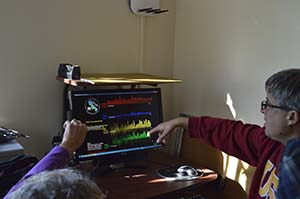Farm helps catch quakes in the Mat-Su Valley
September 9, 2014

The Matanuska Experiment Farm has joined an initiative to create the world’s largest low-cost strong motion seismic network connected by the Internet.
The farm, operated by the University of Alaska Fairbanks, joined 18 other locations in Southcentral Alaska in the network.
The Quake Catcher Network is not only a research project. It also provides scientific educational software so K-12 teachers, students and the general public can better understand and participate in the science of earthquakes and earthquake hazards.
Robert DeGroot, manager of the office of Experiential Learning and Career Advancement at the University of Southern California, visited Alaska in August to install sensors and software designed to present earthquake science and hazards in a modern and exciting way.
The sensor continuously records earth movements and displays that information on computer screens. Using these real-time data records and the interactive software and lesson plans available through QCN, students and the public gain a better understanding of earthquakes and the science behind them.
The portal is linked to sensor sites in Alaska and other states, so it gives access to records of earth movements at those locations as well.
Faculty and staff at the Matanuska Experiment Farm encourage teachers in the Matanuska-Susitna Borough School District to include a visit to the sensor as part of their earth science studies.


